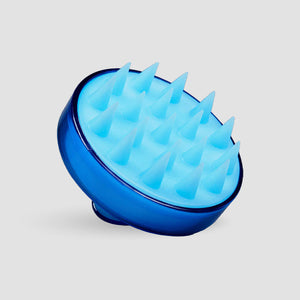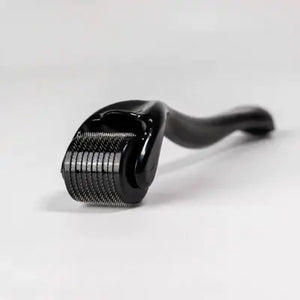
Hair loss in the neck area: Exceptional form of hair loss with striking symptoms
Hair loss in the neck area is a relatively rare form of hair loss and is extremely noticeable, making it particularly problematic for younger people.
If you suffer from this problem, you should therefore inform yourself in detail about the specific symptoms, causes, and treatment options. Hair transplants offer particularly attractive options for many sufferers.
Table of contents
- Which form of the disease most often leads to hair loss in the neck area?
- Typical features of Alopecia areata Ophiasis
- When does a hair transplant make sense?
- Conclusion: High risk and hair transplantation as an interesting rescue option
Which form of the disease most often leads to hair loss in the neck area?
If you experience hair loss in the neck area, you are most likely suffering from an unusual form of alopecia areata. This is the ophiasis type of the disease. Alopecia areata is generally known as circular hair loss. However, the symptoms of this variant of ophiasis have some key differences compared to more common forms of the disease. Among the different characteristics, bald patches in the neck area are particularly noticeable. Furthermore, this problem can also affect other peripheral areas of the hairline, such as the forehead and temples. In typical cases of alopecia areata ophiasis, hair loss is localized. There is a risk that hair loss will spread from your neck area forward along the hairline. Bald areas on the scalp may merge over time and eventually form a hairless ring. The hairless areas usually have a wavy or serpentine appearance. This effect gave rise to the term circular hair loss. The Greek word "ophis" translates as "snake." Compared to other forms of hair loss, ophiasis is significantly more noticeable around the neck. For this reason, those affected often suffer particularly severely from the problem in everyday life. The progression and speed of hair loss in the neck area vary considerably from individual cases.
Typical features of Alopecia areata Ophiasis
Bald patches are smooth in the ophiasis type of circular hair loss. Dandruff, however, is usually not a symptom of the disease . You will notice short, broken hairs on the edges of the hairless areas on the neck. Changes to your fingernails are also sometimes signs that you are affected by this particular form of hair loss. In severe cases, grooves, dimples, or sandpaper-like roughness often form there. Once hair loss in the neck area with this type of ophiasis has started, active immune cells can be detected in the affected skin areas. These cells then attack your own hair roots and follicles. The disruptive autoimmune reaction is, in turn, associated with a problematic inflammatory reaction. These reactions disrupt your hair growth and, in advanced cases, ultimately lead to hair loss.
Various treatment options for hair loss on the neck

If you are losing hair in the neck area, the combination of the following treatment options can be very beneficial in many cases:
- Hair transplant
- PRP treatment with autologous blood
- Hair pigmentation as a cosmetic treatment
With PRP treatment for new hair growth
PRP treatment offers the opportunity to repair damaged hair roots. Sometimes, this method can prevent alopecia areata, just as it can in hereditary forms. If autologous blood treatments successfully save the roots, the method also contributes to stimulating hair growth. This advantage is also useful when autologous blood therapy is used following hair implantation to support the transplanted hair on the neck and is cosmetically supplemented with hair pigmentation. In addition to hair transplants and PRP treatments, there are sometimes other treatment options for hair loss in the neck area that are specifically designed to combat alopecia areata.
Other treatment options for hair loss
As you research treatment options, you may come across the following methods, among others:
- PUVA method with psoralen and subsequent irradiation with UV-A light with a relatively high risk of relapse
- Topical immunotherapy with diphencyprone to suppress damaging immune cells caused by allergic skin inflammation
- Careful treatment by doctors with skin irritants
- Suitable zinc preparations with a supportive effect for hair in the neck area
- Treatment with solutions or creams containing glucocorticoids and other medically prescribed cortisone therapies
For many of the treatments listed, the chances of success against impending hair loss in the neck area are not ideal in every individual case, and at the same time, there is a relatively high risk of relapse in some cases. Therefore, you should definitely talk to your doctor about potential problems and clarify whether the treatment is worthwhile in your situation. Potential side effects and risks related to your individual health condition also play a key role.
A hair transplant as an effective measure
Below-average chances of hair regrowth and hair transplantation as a possible solution. If you have alopecia areata with the ophiasis type on your neck, your hair is often at particularly high risk. Because the chances of hair regrowth in the affected areas are very slim in many cases with this unusual form of the disease. While other types of alopecia areata are relatively limited, a progressive course is more likely than average with the ophiasis type.
When does a hair transplant make sense?
If you're hoping for a positive healing process and the return of a full head of hair, doctors often have to give you bad news when giving their prognosis. If you've irreversibly lost a significant portion of your hair due to hair loss in the neck area, you don't necessarily have to accept the bald patches or low hair density forever after deciding to undergo a hair transplant. Whether a hair transplant is possible depends on the number of healthy hairs in other areas of your head. Competent doctors will examine your hair health in detail and then explain the options for hair implantation in your individual case. Hair transplants are usually performed on an outpatient basis. If you meet the necessary requirements, hair transplants can provide a permanent solution to help you regain magnificent hair. Because the noticeable appearance of a bald neck often also represents a significant psychological burden, supplementing hair transplants with hair pigmentation is an interesting option. Pigmentation gives strangers the impression that your hair structure is thicker.
Conclusion: High risk and hair transplantation as an interesting rescue option
If you are suffering from hair loss in the neck area due to the ophiasis type of alopecia areata, you should rarely expect positive news during your doctor's diagnosis. Due to the prominent appearance of the neck and the relatively poor prospects for hair regrowth, this type of hair loss is more dangerous than numerous alternatives. Several treatment options are sometimes only effective in the short term and are associated with considerable risks of relapse and side effects. Because the noticeable bald patches in the neck area represent a significant burden for many people, including in their social lives, a hair transplant is often a particularly worthwhile countermeasure. If you meet the requirements for treatment success, hair transplantation, combined with PRP treatments and hair pigmentation, can offer excellent long-term prospects for success.




















